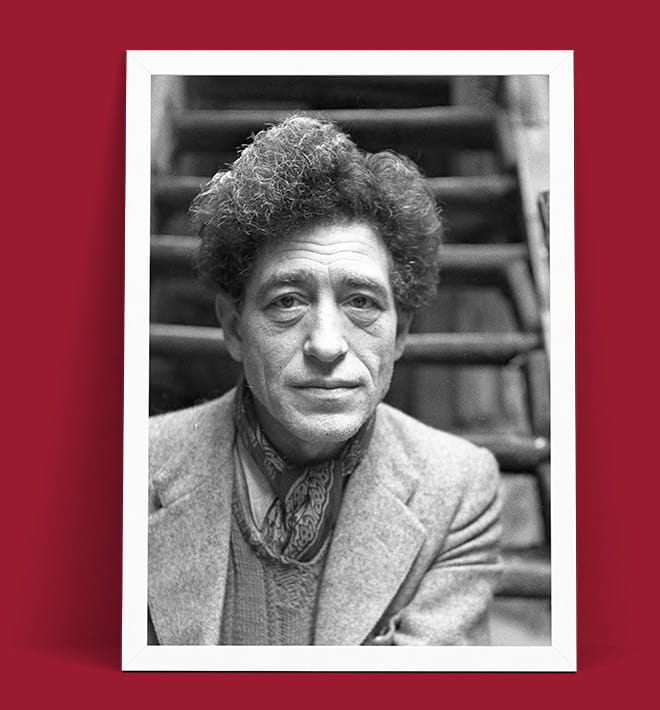Artistic Development
Giacometti's early work was influenced by Cubism and Surrealism, leading to innovative pieces like Spoon Woman (1927) and Disagreeable Object (1931). However, after World War II, he shifted focus to the human figure, developing his signature style of elongated forms. These Giacometti sculptures reflect his philosophical engagement with existentialist ideas, particularly the themes of isolation and the essence of human existence.
Notable Works
- Man Pointing (1947): This bronze sculpture exemplifies Giacometti's mature style, depicting a solitary, elongated figure in motion. In 2015, it sold for $141 million at Christie's, setting a record for the most expensive sculpture sold at auction.
- City Square I (1948): Featuring multiple figures in a shared space, this work explores human interaction and the experience of urban life.
- The Nose (1947): An enigmatic piece that combines elements of Surrealism and existentialism, showcasing Giacometti's interest in the human psyche.
Legacy
Giacometti's work has had a profound impact on modern art, influencing generations of artists and thinkers. His Giacometti sculptures are celebrated for their emotional depth and philosophical resonance. The Fondation Giacometti in Paris houses the world's largest collection of his works, preserving his legacy for future audiences.
Alberto Giacometti's exploration of the human form through his unique sculptural style continues to captivate and inspire, solidifying his place as a master of modern art.
Giacometti’s Enduring Influence
Alberto Giacometti’s influence on modern and contemporary art remains unparalleled. His hauntingly fragile figures, with their raw textures and elongated forms, have inspired generations of artists, from Francis Bacon and Henry Moore to contemporary sculptors like Antony Gormley. His works continue to be exhibited in major institutions, including
- The Tate Modern in London
- The Museum of Modern Art in New York
- Centre Pompidou in Paris
- Fondation Giacometti in Paris
Additionally, Giacometti’s sculptures have become some of the most valuable artworks ever sold. His "L'Homme qui marche I" (Walking Man I) sold for 104.3 million dollars at auction in 2010, making it one of the most expensive sculptures in history.
The Artist of the Human Condition
Alberto Giacometti’s work transcends traditional notions of sculpture, offering a profound meditation on existence, time, and the fragile nature of humanity. His figures, reduced to their most essential and expressive forms, speak to the deep anxieties and resilience of modern life.
His legacy endures not only through the timelessness of his sculptures but also in the philosophical and artistic conversations his work continues to inspire. More than just an artist, Giacometti was a sculptor of the human soul, capturing the tension between solitude and presence, movement and stillness, being and nothingness.










